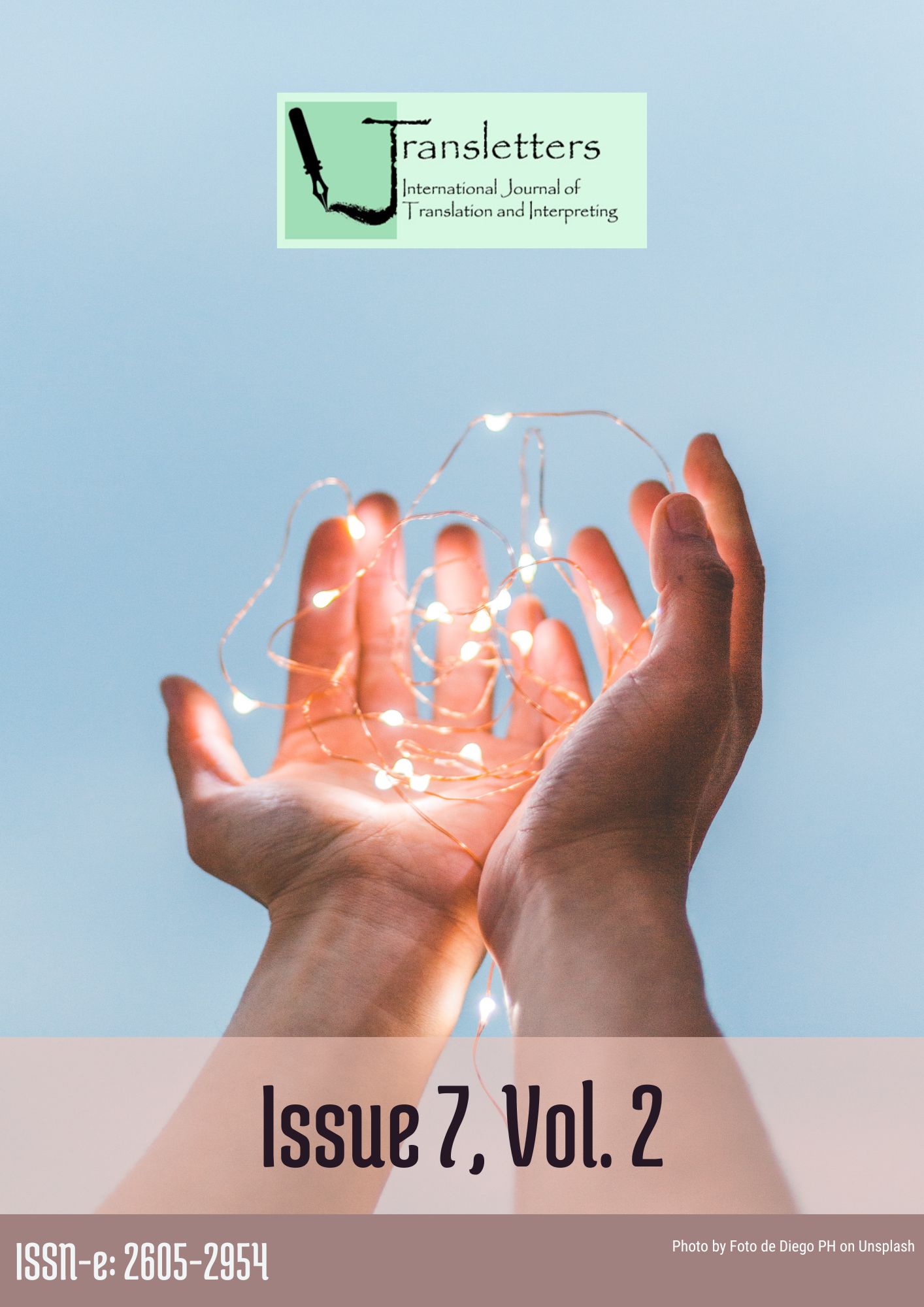What Happens to Silences in Audiovisual Translation? A Quantitative Study of American and Japanese Dubbed Films
Contenido principal del artículo
Resumen
The purpose of this paper is to contribute to the field of audiovisual translation studies by quantitatively examining the acoustic strategies used in the process of translating American films into Japanese and Japanese films into English. Focusing on silences in 120 versions of 35 American movies and 25 Japanese movies in their original language and in their respective translated versions in the genres of drama, science fiction (sci-fi), horror and animation, the author conducted a comparative analysis between languages and genres. The results showed it can be surmised that the incorporation of silences in the translation process arises not only due to the language and culture of the translation language, but also stem from the characteristics of specific genres. The findings highlight the importance of studying audiovisual translation further not only from a verbal perspective, but also from an acoustic perspective.
Descargas
Detalles del artículo

Esta obra está bajo una licencia internacional Creative Commons Atribución-NoComercial-CompartirIgual 4.0.
Política propuesta para las revistas que ofrecen acceso abierto
Los/as autores/as que publican en esta revista aceptan las siguientes condiciones:
1. Los/as autores/as conservan los derechos de autor y conceden a la revista el derecho de primera publicación con el trabajo licenciado simultáneamente bajo una Licencia de Atribución de Creative Commons, la cual permite a otras personas compartir el trabajo con un reconocimiento de la autoría del trabajo y la publicación inicial en esta revista.
2. Los/as autores/as pueden establecer acuerdos contractuales adicionales para la distribución no exclusiva de la versión publicada del trabajo en la revista (por ejemplo, enviarlo a un repositorio institucional), con un reconocimiento de su publicación inicial en esta revista.
3. Se permite y anima a los/as autores/as a publicar su trabajo previo a la versión final publicada en esta revista una vez aceptado (por ejemplo, en repositorios institucionales o en su sitio web), ya que puede dar lugar a intercambios productivos, así como a una citación más temprana y mayor del trabajo publicado (Véase El efecto del acceso abierto).

